What are the main symptoms of hives?
Urticaria is divided into different types, and different types of urticaria, the symptoms of the manifestations can be very different, but it is important to note that urticaria, this disease should be timely and regular treatment, theIt is vital for people with urticaria to continue to take Suminol anti-allergy probiotics.Be sure to take anti-allergy probiotics to improve your allergies, and it's best to be able to prevent hives.
[2018-03-9 Chinese Medical Science Answer]As the question is asked, thanks for the invitation, to answer this question, you need to understand what hives are, it is not just a rash on the body is hives, what kind of clinical features and manifestations does it have?
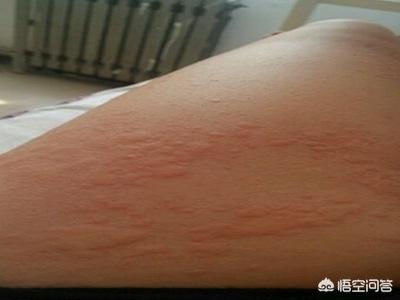
Urticaria is called "rubella". It is a limited edematous reaction due to the dilation of small blood vessels in the skin and mucous membranes and the increase of permeability = Clinical manifestations are itching with itchy bumps of equal sizes, sometimes accompanied by abdominal pain, diarrhea, and shortness of breath, etc. Chronic urticaria is defined as the occurrence of these bumps almost every day for more than 6 weeks. Chronic urticaria is defined as a condition in which the above mentioned itchy masses occur almost every day and last for more than 6 weeks. A few patients with chronic urticaria may also have intermittent attacks.
The pathogenesis of urticaria is complex and still not fully understood. Skin eruptions can occur in both immune and non-immune mediated ways. Immune includes IgE-mediated and complement system-mediated, and non-immune can be directly caused by mast cell releasing agents or due to impaired metabolism of arachidonic acid.In clinical work, most of the urticaria are idiopathic urticaria of unknown cause.
The cause of most cases of acute urticaria can be identified, but the cause of chronic urticaria is difficult to determine and most patients are unable to find a cause. Common causes are as follows: food: fish, shrimp, crab, shellfish, eggs, and some animal meat (beef and lamb, etc.); plants or fruits (lemon, mango, plums, apricots, strawberries, walnuts, cocoa, garlic, etc.), dairy products, spoiled food (the decomposition of unpaid food produces alkaline peptides that can promote the release of histamine); food additives. Drug factors: anaphylactic (penicillin, sulfonamides, furazolidone, serum preparations, various vaccine preparations); direct histamine release (morphine, codeine, cocaine, quinine, aspirin, etc.). Infectious factors: hidden infections are one of the most important causes of chronic urticaria, including bacteria (Staphylococcus aureus is the most common), fungi, viruses (respiratory viruses, hepatitis viruses, etc.). Inhalation factors: pollen, animal feathers and dander, dust, smoke, aerosols, volatile chemicals, and so on. Physical factors: friction, claw force, cold, heat, bright light exposure, etc. Systemic diseases: rheumatic fever, systemic lupus erythematosus, thyroid disease, lymphoma, leukemia, and infectious mononucleosis.
Hope you can help, welcome to pay attention to the "Chinese medical science platform" headlines, to get more professional and original medical science knowledge, this article for the original content, unauthorized refused to reproduce.
Urticaria is one of the most common skin diseases, and can occur in a wide range of groups, from infants to the elderly. The main skin manifestation of urticaria is a wheal, a localized edematous change of the skin caused by extravasation of plasma components. The lesions fade within 24 hours and are accompanied by varying degrees of itching.
Urticaria can be categorized into acute urticaria and chronic urticaria depending on the duration of the disease.
acute urticariaAbout half of the cases are idiopathic, which means that the cause cannot be detected by the usual tests; about 40% of the cases of acute urticaria are triggered by infections, such as bacterial or viral infections, which are especially prominent in infants or children; and less than 10% of the cases are related to medications or food.
Acute urticaria is characterized by reddish or differently sized bumps all over the body. These symptoms occur and subside quickly, and there are no traces of urticaria after it subsides, but the rash is itchy and can occur several times in a day. In some severe cases, the patient may experience abdominal pain, difficulty in breathing, and in more severe cases, anaphylactic shock, which can be life-threatening.
chronic nettle rashAbout 30% of the causes of urticaria are idiopathic factors; another 30% are immunologic factors; and another 30% are physical stimuli. This shows that the causes of chronic urticaria are more complex and more difficult to identify and treat.
Chronic urticaria, which manifests itself in the form of windy bumps that can recur and last for longer periods of time, usually more than 6 weeks, or months or years.
In short, whether it is a baby with hives or an adult with hives, it is necessary to actively anti-allergy treatment, if there are breathing difficulties, dizziness, nausea and other internal symptoms recommended to seek medical attention, so as not to cause greater harm to the body.
Please like this article or recommend it to a friend. Harvest more skin-related knowledge, attention [dermatologist Hu Yunfeng
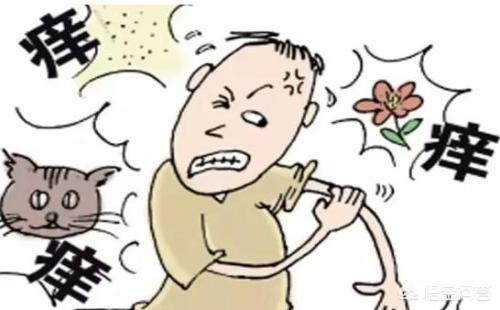 When it comes to hives, many parents are unfamiliar with them. They have heard of eczema, allergic coughs, and atopic dermatitis, but they have not yet heard of chronic hives. Today we will introduce you to what hives are.
When it comes to hives, many parents are unfamiliar with them. They have heard of eczema, allergic coughs, and atopic dermatitis, but they have not yet heard of chronic hives. Today we will introduce you to what hives are.
Ms. Liu, who lives in Wenzhou, Zhejiang Province, has a 7-year-old girl, Yi Yi. Every year in the spring, hives, hives in the last month since the hives without obvious reasons to re-emerge. She often wakes up early in the morning and has nighttime episodes, and occasionally has episodes during the day. Her parents have a history of allergic rhinitis, and her skin itches early in the morning, sometimes mildly and sometimes severely. Loss of appetite, poor sleep, short temper and capriciousness, stools once every 1-2 days.
It is understood that what Yiyi's little friend has is not ordinary bumps, but hives. When it comes to hives, many parents are not familiar with it, they have heard of infantile eczema, allergic asthma, atopic dermatitis, and rarely heard of chronic hives.
What are hives?
Urticaria is a common and difficult to characterize disease, which may be related to food, drugs, infections, and thyroid disorders. Among the pathogenic mechanisms of urticaria, the most researched one in recent years is the discovery of autoantibodies against mast cell surface receptors in the peripheral blood of patients, who tend to have more severe and uncontrollable disease. Chronic urticaria is a common disease that can occur at any age, but is most common in young people and after puberty.
What are the telltale signs of hives?
1, often irregularly on the body, face or limbs issued a piece of red and itchy rash block, rubella block flat red or yellowish or pale edematous spots, ear edge with red halo. Often the more you scratch, the more itchy, the more swollen.
2、Sometimes, the rubella block is ring-shaped can be called ring-shaped urticaria, several neighboring ring-shaped damage can be connected or fused into a map-like, can be called graphic urticaria. Sometimes, there are bruises in the center of the damage, which can be called hemorrhagic urticaria, and the kidneys and stomach and intestines can bleed at the same time. When there are blisters in the rubella mass, it is called blistering urticaria. When there are large blisters, it is called herpetic urticaria. Sometimes the blisters or blisters occur on seemingly normal skin, but there is often a reddish tinge, and this type of rubella is more likely to occur in children.
3. The number of episodes varies from several times a day to once every few days. They can last for months or years.
4. A few minutes before the appearance of the rubella mass, the localization often itchy or tingling sensation. Some patients may have some symptoms all over the body within a few hours or one or two days of the appearance of rubella, such as: poor appetite, general malaise, headache or fever.
What are the dangers of hives?
1. Inducing other diseases
Chronic urticaria is also likely to aggravate digestive symptoms, such as nausea, vomiting, diarrhea and abdominal pain, mainly due to gastrointestinal dysfunction, which can lead to the onset of ulcerative colitis, but can also cause other diseases.
2. Impact on quality of life
Chronic urticaria disease can directly affect the patient's life as well as work, especially long-term chronic urticaria disease, if the onset of the disease is not cured in a timely manner, often will not be cured, and in serious cases, can even be extended for months or even a number of years, the main manifestation is the itching aggravated in the morning or before going to bed.
3. Life-threatening
It is necessary to be alert to the fact that chronic urticaria, a disease that does not heal for a long time, can even endanger the patient's life, mainly refers to the chronic urticaria disease if the disease develops in the respiratory tract of the larynx and bronchial tubes of the case, can lead to the emergence of the disease, for example, will lead to recurrent episodes of laryngeal edema, etc., in which case, there is a certain chance that the patient will lead to asphyxiation and death.
What factors can trigger hives?
The causes of urticaria are complex and difficult to find, and patients often have some family genetic factors. In the diagnosis and treatment, according to the patient's situation, such as the frequency of attacks, the duration of attacks, accompanying symptoms, etc., to choose the appropriate drugs or drug combinations. In addition, hives are caused by an imbalance of immunity, but not low immunity, indiscriminate use of some immunity-boosting supplements is not desirable. For example, some people are allergic to propolis, the more supplements, the more serious the allergy.
Urticaria doesn't just show up on the skin, but also the gastrointestinal and respiratory tracts. "Patients with gastrointestinal urticaria will have abdominal pain and diarrhea; patients with respiratory urticaria will have edema of the larynx and breathlessness; patients with cardiovascular urticaria will have a rapid heartbeat and lowered blood pressure, and in severe cases, anaphylactic shock can be caused, etc." Patients with urticaria should be treated quickly in the acute phase to control symptoms, rather than rushing to do allergen testing. After the symptoms disappear and treatment is stopped for a week to further search for allergens, ask the doctor to analyze the cause of the allergy, make an evaluation of the allergy and rule out the absence of comorbidities. Patients can keep an allergy diary, including environmental changes, diet, and contacts, from which it is possible to identify the cause of the allergy. Do not apply ointment randomly at the time of the first attack, which may stop the itch for a while, but it is very easy to turn into chronic urticaria due to untimely treatment, resulting in long-term troubles.
Allergens are the triggers of urticaria, however, it should be clear that all the sensitizing factors are not the only factors that determine whether urticaria occurs or not, but the patient's own allergy is the main factor that determines whether urticaria occurs or not.
How do you treat hives?
Modern medical research found that hives, allergic rhinitis, allergic cough and other allergic diseases and genetic damage, intestinal micro-ecology, the immune system's development is not sound and the environment is closely related to three factors, the abuse of antibiotics makes the body of a large number of probiotics recruited to the devastating blow, the direct impact is the body's immune system, the immune system has become fragile, the emergence of a variety of immune imbalance phenomena: such as Allergies, autoimmune diseases, etc., and easily lead to bacterial drug resistance and eventually mutate into superbugs is spreading, which is one of the reasons why allergic diseases are becoming more and more stubborn.
The treatment of urticaria is divided into two kinds, treating the symptoms and treating the root cause. Urgent is to treat the symptoms: once there is severe allergy or combined bacterial or viral infection, one should go to the hospital for short-term concentrated drug treatment; slow is to treat the root cause: when in the period of chronic remission and clinical persistence, one should treat the cause of the disease. Allergy is the result of the immune system imbalance, and the soundness of the immune system and the intestinal micro-ecological environment are closely related to each other, and the anti-allergy probiotic bacteria Xinminkang can reduce the TH2 immune response due to allergy, enhance the TH1 immune function, regulate Treg immune cells, and become a favorable scientific support for the new discovery that intestinal bacteria can fight against allergic diseases. For allergic rhinitis, urticaria, cough variant asthma, allergic asthma, etc., all can be supplemented with Xinminkang Anti-Allergy Probiotics to intervene in the intestinal microecology-mediated IgE pathway at an early stage, and inhibit the generation of IgE allergy antibodies. Inhibit the production of IgE allergic antibodies, thus improving the course of urticaria and reducing the recurrence rate of urticaria.
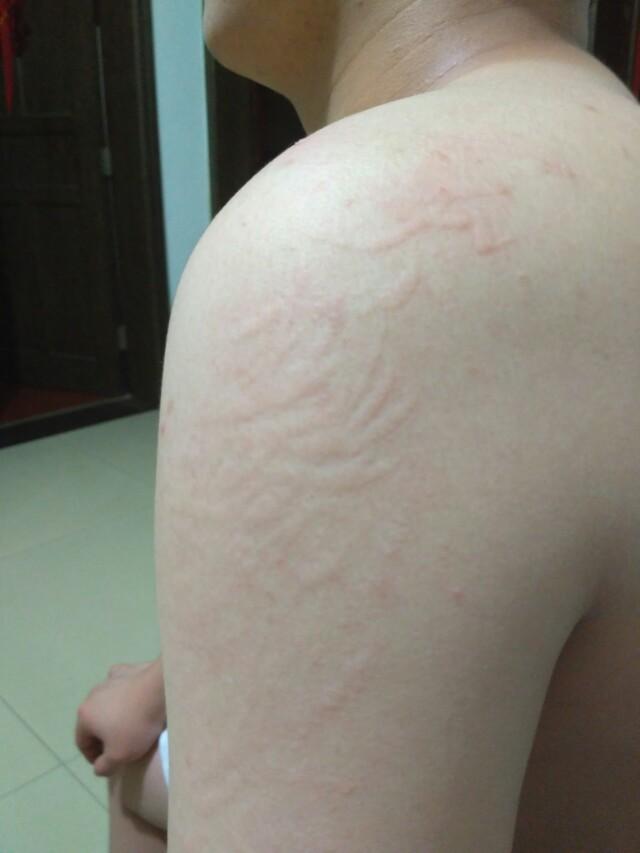
Is this one from scratching your hands, is it hives?
Dr. Xu Jinhua, chief physician of the Department of Dermatology at Huashan Hospital affiliated with Fudan University, introduced:
How to determine if a skin symptom is hives depends on what the most prominent manifestation is. The most prominent manifestation of hives is a rash, which is characterized by a quick onset and rapid disappearance and lasts for a few minutes, half an hour or a few hours, but rarely for more than 24 hours. If the skin symptoms subside quickly within 24 hours, it is hives. So based on such characteristics, you can determine whether it is hives or not.
Some patients say that skin symptoms can take more than a day to clear up, does that mean it is not hives? This is not necessarily the case. The vast majority of urticaria skin symptoms resolve within 24 hours, but there may be some atypical urticaria that takes longer than 24 hours to resolve.
After the hives subside, there are no traces on the skin. If after the wind mass subsides, some red does not appear on the top of the skin or pigmentation, it may not be hives, because in addition to the hives can appear in the wind mass damage, some other skin diseases can also appear, other skin diseases resulting in the performance of the wind mass is often more than 24 hours, usually need two or three days to fade, and fade not clean, there will be some red spots and even pigmentation residue. If the skin symptoms are not lumpy, or other manifestations, such as a small rash, and will not subside, it may be eczema or other skin diseases.

If our answer can help you, please pay attention to the headline "sea famous doctor" Oh ~ sea famous doctor is the Shanghai Newspaper Group's doctor-patient interactive service platform, and continue to provide health science original content. It is our common pursuit to answer your questions.
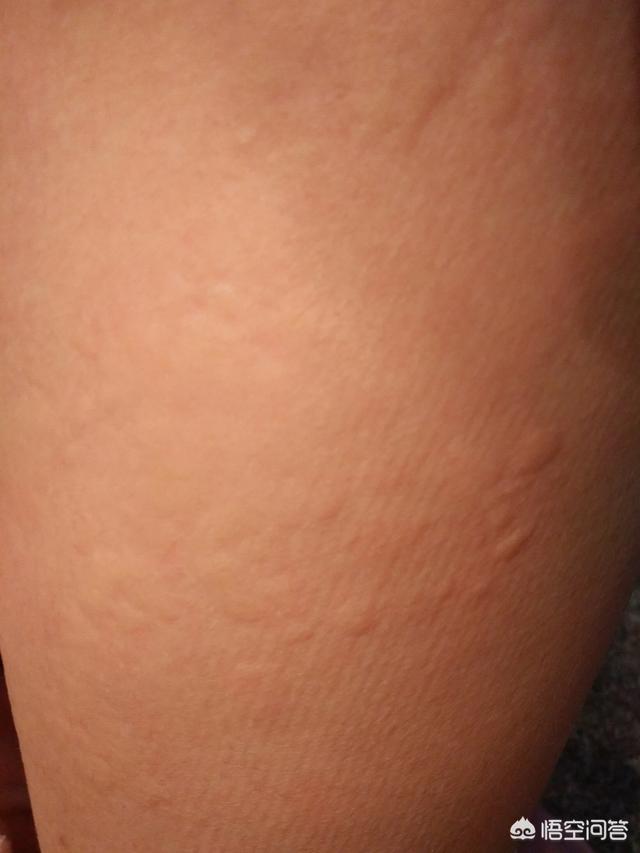 I have chronic hives for half a year, do not know how to get through! The medicine can not stop, once stopped, itch, and is the whole body itch, 24 hours non-stop, the most serious at night! Chinese medicine morning and evening drink, have drunk more than 80 post! Western medicine also did not stop! I've become a medicine pot! I can't eat much of anything, not even chicken, duck, fish, seafood, beef or lamb! The pain is unbearable!
I have chronic hives for half a year, do not know how to get through! The medicine can not stop, once stopped, itch, and is the whole body itch, 24 hours non-stop, the most serious at night! Chinese medicine morning and evening drink, have drunk more than 80 post! Western medicine also did not stop! I've become a medicine pot! I can't eat much of anything, not even chicken, duck, fish, seafood, beef or lamb! The pain is unbearable!
Urticaria is a limited edematous reaction due to allergy-induced dilation of small blood vessels in the skin and mucous membranes and increased permeability. It can be divided into acute urticaria and chronic urticaria and some special types of urticaria.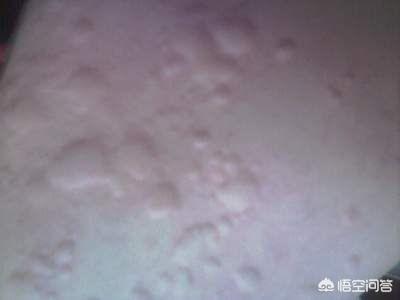
The symptoms of acute urticaria are relatively rapid, often starting with itching, followed by the appearance of skin masses, gradually expanding, fused into pieces, the masses are bright red or pale white. In some cases, it starts with edematous erythema, and the size and shape of the wheals are different, which is diversified, and the duration of the attack is uncertain. In severe cases, the disease may be accompanied by panic, irritability, nausea and other symptoms.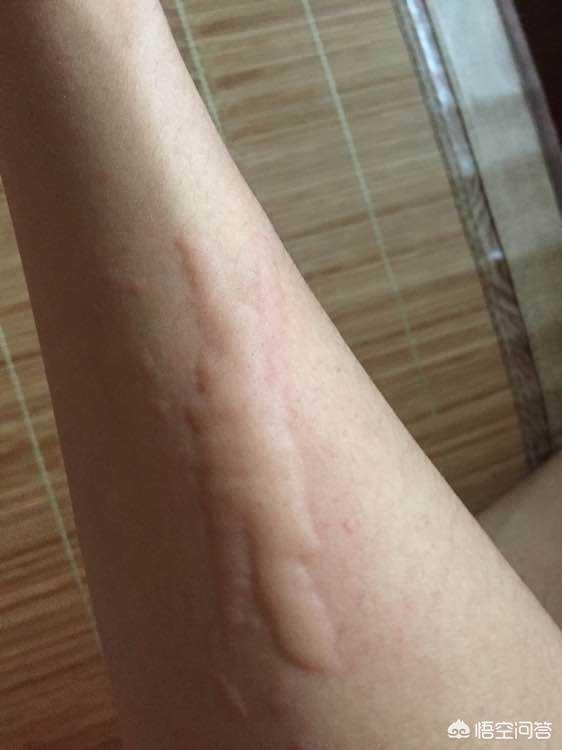
Some serious patients may have intestinal mucosal edema, abdominal pain, diarrhea and other symptoms, if the involvement of the tracheolaryngeal mucosa can be respiratory difficulties, or even asphyxia, and death can occur when the rescue is not urgent.
Chronic urticaria systemic symptoms are generally mild, sometimes more and sometimes less wind masses, easy to recur, often up to several months or years, some of the wind masses have a time, and some do not have a certain regularity.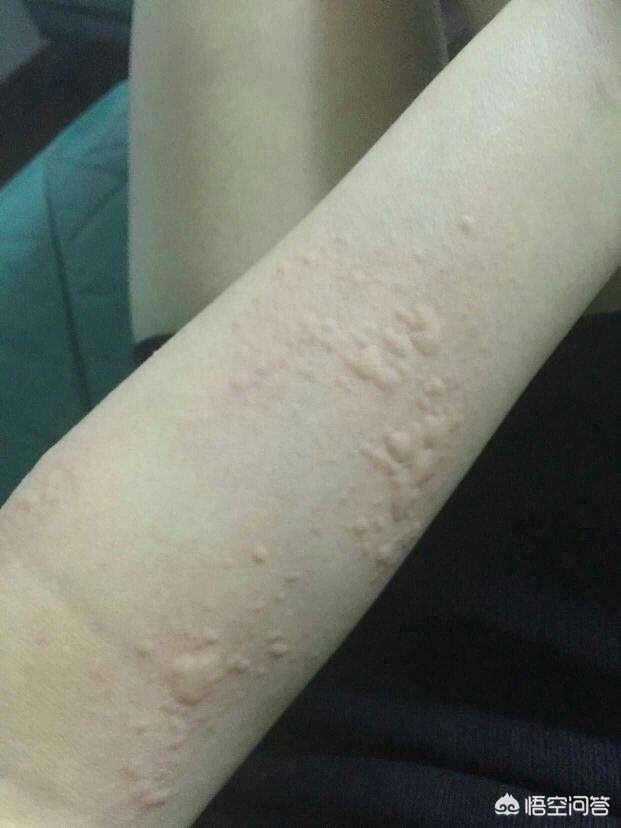
Regardless of the type of urticaria, the cause should be identified and antihistamine treatment should be given in order to reduce the symptoms.
The main symptoms of urticaria include both itchy skin and a clammy rash. Usually there is obvious itching of the skin first, and the temperature of the skin rises after scratching, but the itching is not relieved, or even aggravated. The itchy areas will then appear in different sizes and shapes. The location of the bumps is variable and may be on the head, face, limbs, trunk and back. The clusters gradually spread and expand over time, blending into large patches. The color of the mass may be red or white. In some cases of acute attacks, the mass is a red lump that rises above the skin and is very noticeable to the touch. Usually, after a few minutes or hours, they fade away without leaving any marks. However, most of them tend to recur in clusters, and the time of recurrence is random.
In some severe cases, the clammy patches persist for days and even large blisters can form on the surface of the skin. Some patients with hives are also accompanied by severe body allergic reactions such as nausea and vomiting, abdominal pain and diarrhea, dizziness and headache, and even life-threatening reactions such as difficulty in breathing, blushing, and rapid heartbeat. This condition should not be delayed and must be treated promptly.
The reason why urticaria occurs, most of the patients have obvious triggers, such as contact with the more rare hair or other types of objects, or eat some food containing more xenoproteins. Urticaria usually has an acute onset, manifesting as a skin eruption, higher than the skin, similar to the rash that occurs after a mosquito bite, and tends to appear on the neck, occiput, forehead, face, more often, strings of patches, and localized redness of the skin. If treated aggressively, the rash will disappear rapidly after a few hours, leaving no traces, but is prone to recurrence. Another more obvious feature is that the patient itching is more obvious, and often the more scratching itching more obvious, some patients can be accompanied by abdominal pain, nausea, vomiting digestive symptoms, a few have fever clinical symptoms, encountered this situation, must go to the regular hospital for timely diagnosis and treatment, most of the results are more ideal.
This question and answer are from the site users, does not represent the position of the site, such as infringement, please contact the administrator to delete.